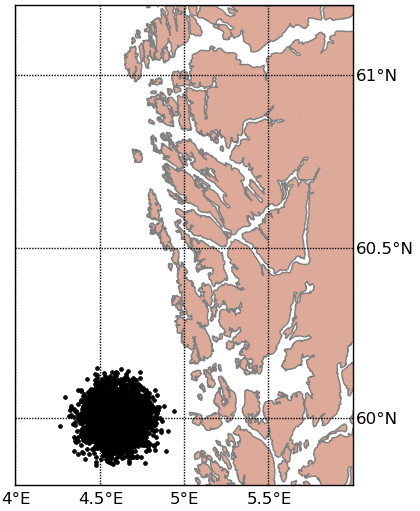Hello Team,
First of all, Congratulations and thanks so much for developing easy to use open source trajectory modelling software. I'm new to python and hope i can use this software for my PhD research here at University of Stavanger in Norway. I've installed Opendrift and trying to run tutorials and examples. However, when running tutorials, I'm getting error when trying to add reader from a local file and also when trying to import landmask. Can someone please guide me about this issue. I'm pasting errors below.
Thanks in advance!
-------------Error while trying to add reader from a local file--------------
reader_norkyst = reader_netCDF_CF_generic.Reader('norkyst800_16Nov2015.nc')
13:40:31 INFO: Opening dataset: norkyst800_16Nov2015.nc
13:40:31 INFO: Opening file with Dataset
Traceback (most recent call last):
File "C:\Users\mevo.conda\envs\opendrift\lib\site-packages\opendrift\readers\reader_netCDF_CF_generic.py", line 142, in init
self.Dataset = Dataset(filename, 'r')
File "netCDF4_netCDF4.pyx", line 2321, in netCDF4._netCDF4.Dataset.init
File "netCDF4_netCDF4.pyx", line 1885, in netCDF4._netCDF4._ensure_nc_success
FileNotFoundError: [Errno 2] No such file or directory: b'norkyst800_16Nov2015.nc'
During handling of the above exception, another exception occurred:
Traceback (most recent call last):
File "", line 1, in
File "C:\Users\mevo.conda\envs\opendrift\lib\site-packages\opendrift\readers\reader_netCDF_CF_generic.py", line 144, in init
raise ValueError(e)
ValueError: [Errno 2] No such file or directory: b'norkyst800_16Nov2015.nc'
-------------------- Error when importing landmask--------------------
reader_landmask = reader_global_landmask.Reader(
... extent=[2, 8, 59, 63])
13:43:39 DEBUG: Adding new variable mappings
ERROR:root:could not verify read permissions for group and others on landmask.
Traceback (most recent call last):
File "C:\Users\mevo.conda\envs\opendrift\lib\site-packages\opendrift_landmask_data-0.6-py3.8.egg\opendrift_landmask_data\mask.py", line 77, in check_permissions
if not os.stat(self.lockf).st_mode & 0o777 == 0o777:
FileNotFoundError: [WinError 2] The system cannot find the file specified: 'C:\Users\mevo\AppData\Local\Temp\landmask\.mask.dat.lock'





